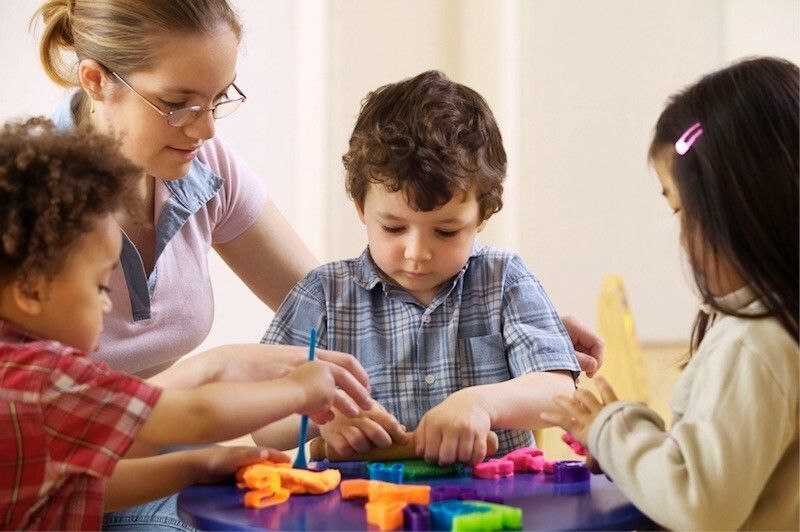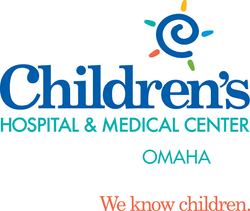
Sami Bradley, who co-leads the board of the Nebraska Association for Infant Mental Health (NAIMH) with Holly Hatton-Bowers, says that most people, when asked about infant mental health, “picture a baby on a couch with a therapist.” “But the field is much broader than that,” she adds. Her definition of infant mental health involves a child’s capacity to learn and grow, the development of their social and emotional skills, and, perhaps most important, the bonds they form with the nurturing adults who will model skills and educate them in their development.
According to Zero to Three, a national organization whose mission is to “ensure that all babies and toddlers have a strong start in life,” infant mental health involves “the developing capacity of the child from birth to 5 years old to form close and secure adult and peer relationships; experience, manage, and express a full range of emotions; and explore the environment and learn—all in the context of family, community, and culture.” The organization emphasizes the importance of the field by pointing out that roughly 10%-15% of children under 5 “experience emotional, relational, or behavioral disturbances,” particularly in families dealing with trauma, where substance abuse or mental illness are involved, or where one or both parents have been lost.
In Nebraska, the field of infant mental health is burgeoning even while demand in the state suggests a growing crisis. Bradley says, “there has been tremendous growth over the last 5 years, lots of building of infrastructure. But, she points out, burn out is high. There are just not enough practitioners in the field to meet demand and most are focused in Lincoln and Omaha. Bradley, who had a family therapy practice herself in Holdrege, says that some families drove more than 2 hours to see her because care was not available where they lived.
Nebraska needs, according to Bradley, more therapists who have experience with young children, more home visitors with training in the field, and more systems to help those already working in the field cope with stress. She is quick to point out that there are “really good programs trying to help with this (stress)—Cultivating Healthy Intentional Mindful Educators (CHIME), Circle of Security Parenting Classroom (COCP).” But, she explains, these programs don’t have enough facilitators to cover the state’s need and without more funding they can’t hire more.
The results of an underfunded and overstretched infant mental health field have underscored a growing problem in the state. According to Mental Health America’s 2022 study The State of Mental Health in America, Nebraska ranked 37 out of the 50 states in youth mental health. This is not only just two points shy of the 39 cut off for a critical status but is also a sharp drop from the state’s ranking of 21 in 2017-2018. In fact, Nebraska showed a 3% increase in youth with major depressive episodes and yet a 7% decline in treatment. This drop from previous studies was the largest of any state.
To understand the problems occurring in infant mental health, it’s important to return to the baby on the couch. As Bradley suggests, while therapeutic settings can be a part of field, it is so much more than that. As she puts it, “people don’t realize their roles—I’m just a childcare provider, I’m just a home visitor—but these people do have a tremendous impact on infant mental health!” That’s why there is such a focus on the workforce, she explains. “Early childhood professionals work in infant mental health. They just don’t call it that.” It is these workers in partnership with families that assist young children in meeting important developmental milestones, such as talking, physical skills like climbing stair, naming emotions, asking for help, and engaging in cooperative play with other children.
Much of the work then that needs to be done in overcoming disparities involves further professionalization of the field. Bradley notes that it is only recently that educators had to have at least one course in early childhood and that it’s important to continue the conversation with universities and community colleges to create greater focus in the area. This would allow for more training on how to meet young children’s social and emotional needs, on how to recognize and stem potentially problematic behaviors, on how to work with families on meeting milestones. Furthermore, such professionalization of the field would need and might encourage governmental financial support. It would encourage insurance companies to more adequately support work in the field. And such financial compensations would further underscore the professional status of the field.
Many of the recommendations Zero to Three makes involve bolstering early childhood professionals: offering incentives to colleges, universities, and training programs to prepare infant mental health professionals; strengthening the workforce by creating policies that encourage hiring professionals with infant and early childhood mental health endorsement or credentialing; creating increased training for the workforce in infant mental health; and ensuring Medicaid pays for services in the field. One significant step in this area is NAIMH’s union with the Alliance for the Advancement of infant Mental Health through whom they now offer international endorsements at four different levels.
Another area of focus for improvement is building a statewide infrastructure so that all of Nebraska’s families have access to quality services in their location. That is where much of the work has been done in the state over the last 5 years. However, there is still much to be accomplished and recommendations include using funding at all levels to implement statewide infant mental health services, involving infant mental health professionals in creating statewide Quality Rating and Improvement Systems, and embedding professionals in a variety of programs serving children and their families such as early intervention and home visiting.
One final factor negatively influencing the field is the unfortunate politicization of social and emotional work. Social emotional development has become in some circles code for work that transgresses family boundaries and that teaches values in contradiction to the desires of families. That isn’t what infant mental health aims to do. Bradley says that so much happens in the first 3 years of a child’s development and the adults in their lives have a huge impact on young children’s growth. It is inevitable that all adults who work closely with children will influence development, and professionals seek to partner with families for optimal growth for children. That is why such programs as classes on parent educator relationships teach early childhood professionals and families the way a child experiences the world. That is why coaches and home visitors in the state are trained to work with families and educators to optimize developmental settings.
The Institute of Medicine estimates that the costs to our economy of early childhood emotional and behavioral disorders is over $247 billion dollars per year. Untreated disorders can impact physical, cognitive, communication, sensory, emotional, social, and motor skills and can influence the ability to succeed in school and in life. Children who don’t receive treatment are more likely to perform poorly in school and are at higher risk for delinquency. But beyond therapeutic needs, the field of infant mental health provides support for families and educators in creating environments in which children thrive and in which the bonds they form with adults and peers are conducive to positive emotional development.












